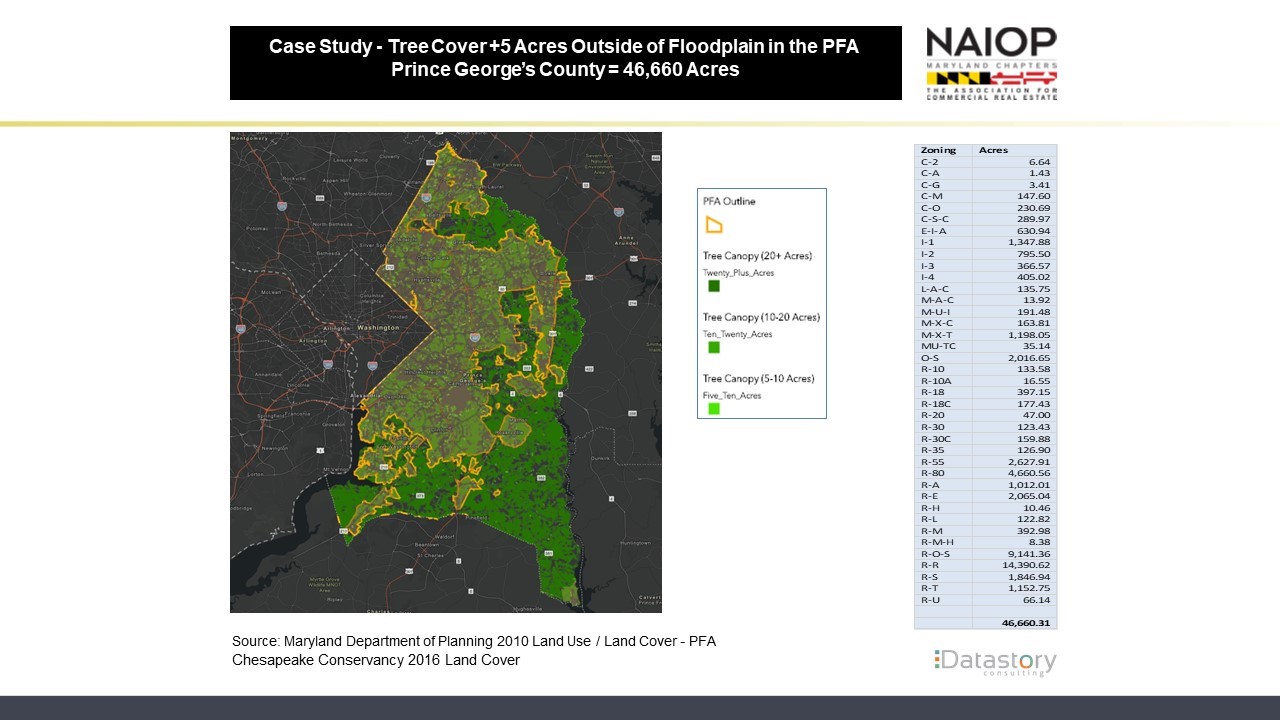For the second year in a row the Assembly rejected a misguided change to forest conservation requirements that was the top legislative priority of the Chesapeake Bay Foundation, Sierra Club and Maryland League of Conservation Voters. Motivated by opposition to land development projects in Frederick and Anne Arundel Counties the groups pursued legislation that would have made the presence of forest the single determining factor in the location and density of future development. The bills mandated severe changes that disregarded the environmental and public benefits of density and ignored a generation of land use and environmental planning that, combined, allow the state to exceed the no-net-loss of forest targets passed into law in 2013, exceed state land conservation goals and meet its land use and economic development objectives.
For more than 25 years The Forest Conservation Act has required that development projects make “reasonable efforts” to avoid clearing of forest. House Bill 766 and Senate Bill 610 sought to replace the “reasonable efforts” standard with a rule that would require that priority forest be left undisturbed. The bills specifically prohibited the clearing of priority forest to achieve density, preserve design features, reduce costs or to grade the site. The bills would have also mandated that review of forest conservation be frontloaded in the development review process rather than coordinated with engineering and site design. Applicants would also have been required to apply for variances from development standards as part of requirements to seek approval of alternative design concepts.
The bills expanded the footprint of priority forest subject to this new standard of review by designating more than 3.8 million acres of land identified in two state data bases as new Priority Retention Areas. In addition, contiguous forest of five acres or more in Priority Funding Areas, all forest located in reservoir watersheds and an expanded 100-foot buffer around streams would be designated priority forest that was to be left undisturbed under the proposal.
In the unlikely event that an applicant could justify clearing forest under the proposed standards, the bills required mitigation at a ratio of 1 acre replanted for each acre of priority forest removed. This would have required a higher percentage of development land be dedicated to forest easements, significantly increased the amount of forest conservation fees paid or both.
 A NAIOP analysis of the designated growth areas of Prince George’s, Montgomery and Anne Arundel Counties identified more than 100,000 acres of land likely under the footprint of the bills.
A NAIOP analysis of the designated growth areas of Prince George’s, Montgomery and Anne Arundel Counties identified more than 100,000 acres of land likely under the footprint of the bills.
More important than the total acres were the locations likely impacted. NAIOP case studies identified mixed use and transit-oriented development projects along the Purple Line, at the Watkins Mill interchange, on the planned alignment of the Corridor Cities Transitway and on office and industrial land near BWI Thurgood Marshall Airport whose yield and viability were threatened. A review of important redevelopment projects found several that require minimal impacts to forest, including the Prince George’s County Regional Hospital and proposed FBI headquarters site at the Greenbelt Metro, that would be practically impossible to approve due to the inflexible nature of the bills.
Despite the fatally weak foundation of the bills, pressure generated from social media campaigns made members of the House and Senate, who want election year endorsements from the proponents, reluctant to vote, no. The bills were the subject of two extended mid-session negotiating workgroups and were gutted and rewritten into a task force and then on the weekend before the close of session, into a simpler technical study and broad programmatic review of forest conservation programs. Time expired with the bills awaiting a vote in the Senate.